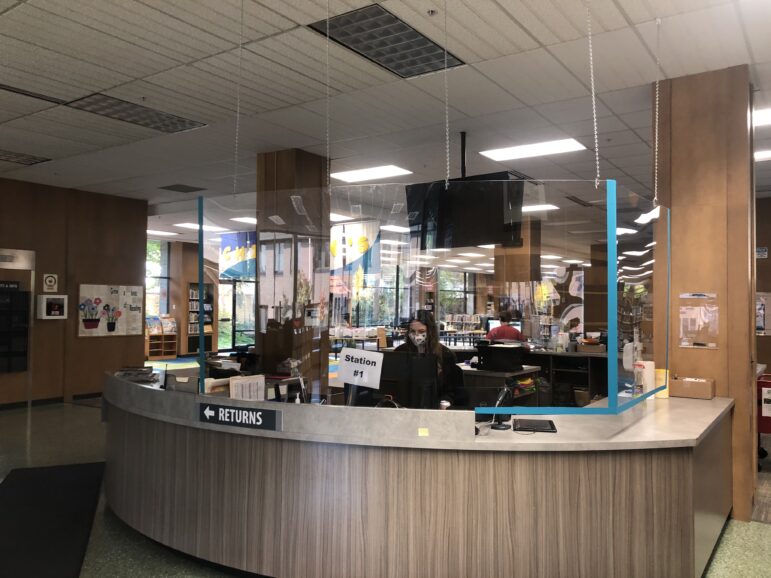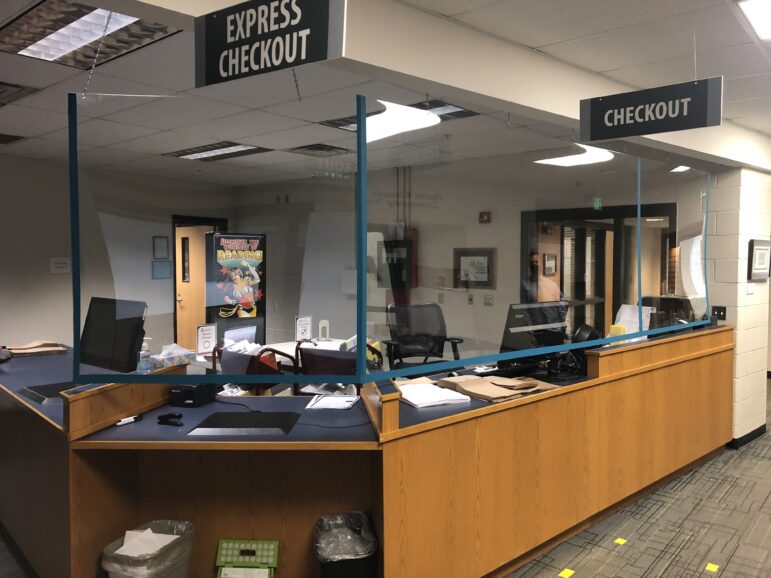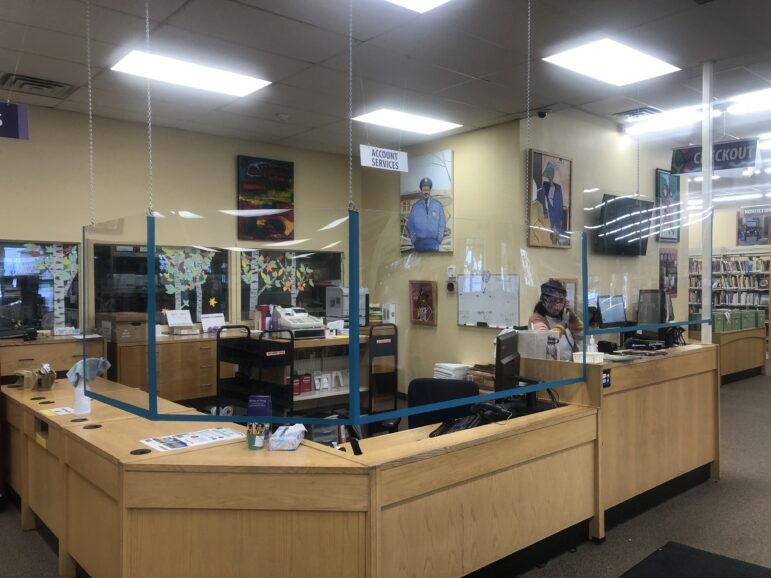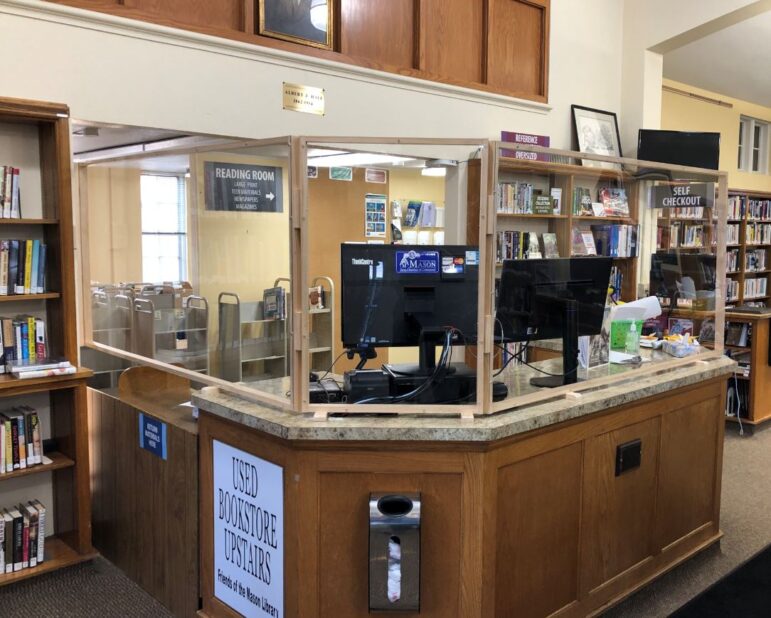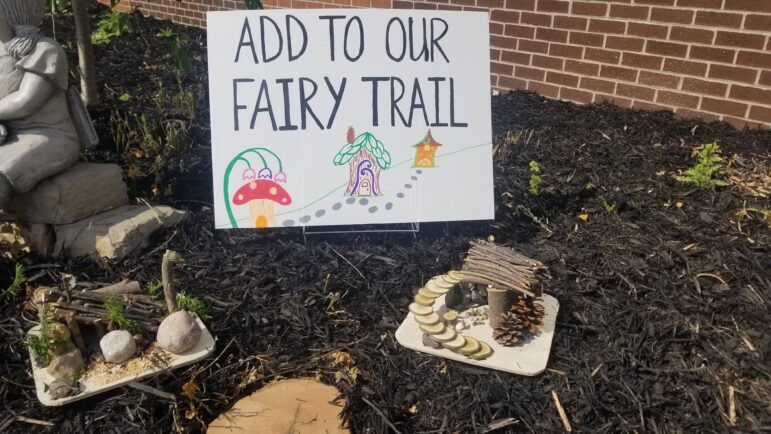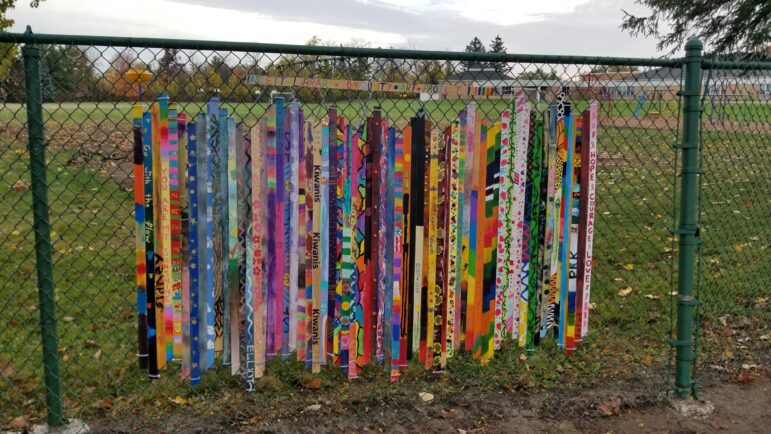Amanda Vorce was hired in April as head librarian for Webberville Library — but due to the COVID-19 pandemic, she wasn’t able to enter the building until the middle of summer.
“It’s funny, not knowing what it was like before,” said Vorce. “This has always been my experience right here.”
Haslett head librarian Thomas Moore didn’t fare much better. He was hired less than two weeks before buildings were closed and lockdowns were put in place, still in the middle of training as the first coronavirus cases were confirmed.
Michael Moore, the operations director for the Capital Area District Libraries, was also new to his role; unlike the librarians, he was able to go to the buildings during lockdown and work to improve the safety and sanitation of the 13 branches.
“Libraries are a lot different than going to Meijer, you know, so we’ve got a lot of plexiglass sections and things like that,” said Michael Moore. “My responsibilities (before the pandemic) really were a lot to do with the libraries themselves … making sure that they’re fresh and inviting spaces that are comfortable and warm. Now … it’s the safety of contracting the virus versus the safety of, just keeping it warm or not having broken furniture.”
The roles and work environments of librarians and directors might have changed since the beginning of the pandemic. But the goal of CADL has not wavered.
“Our job as libraries has always been to help give people a sense of community. It’s different now, but … our number one thing, is to support our community and give people a sense that we’re doing OK,” said Vorce.
Libraries are offering services as they can, in accordance with changing guidelines. Books and materials are now delivered through curbside and contactless pickup. In some libraries, computers are available to use, but by appointment and for only one hour at a time. Materials are returned to drop boxes and are placed in quarantine for four days once they are collected. Staff work spaces have been spaced out, spreading out into places that once held community events or other services such as a silent reading space. CADL branches have done away with overdue fines.
“We would backdate it so (people) wouldn’t get fines, but in the meantime they would get so anxious because it would say it was overdue,” said Vorce. “With the pandemic, everything’s been really hard for people, so we haven’t had fines … it’s made the whole process easier all around.”
Like other businesses during the pandemic, CADL has seen a large increase in the use of digital media and services. Michael Moore says he thinks CADL has not only adapted well to the pandemic, but grown its offerings to patrons by expanding digital collections. Vorce said CADL’s digital circulation increased 21.4% between 2019 and 2020, and more than 700,000 digital materials checked out by patrons. Webberville’s Zinio Digital Magazines circulation increased by nearly 200 checkouts in the same period — a 518% increase. Some programs, like storytimes and book clubs, have moved online as well.

Amanda Vorce
Webberville library assistant Betty Juntunen stands outside of where patrons can pick up book and craft kits.Vorce said Webberville has poor internet quality, and that has caused problems for students who now have to work remotely. To combat this problem, Webberville has been working closely with nearby schools to provide hot spots for students. The library recently received a grant to purchase new hot sports that could be checked out for six months rather than the standard two weeks.
“I never had thought about hot spots before in my life,” said Vorce. “And then I start working at Webberville in a pandemic, and that’s been a huge part of my job, all of a sudden.”
CADL is continuing to expand its Student Success Initiative, which gives local students a library card and access to CADL resources.
Haslett Library has put together community arts projects, asking patrons to make artworks at home and bring them to the library to be featured in a collection. During the summer, the library collected fairy houses made of yard materials such as pinecones and created a fairy trail at the Harris Nature Center. Over the fall, people were asked to take home sticks, paint them and return them to the library. Thomas Moore says he received about 60 painted sticks, which were turned into a mural that hung on a fence at Ralya Elementary School.
“We were trying to create opportunities for people to still feel connected, even though it was really hard to get together,” said Thomas Moore.
In a January update, Thomas Moore wrote that Haslett gives out 150 crafts a week and assembles 150 grab-and-go bags. Not only do arts and crafts initiatives engage the community, he said, they also help develop literacy skills and strengthen bonds among children and their parents and grandparents.
“What’s really cool is that we keep on getting so many comments back about how much they enjoy those,” said Thomas Moore. “At the beginning of this I thought … ‘It’s not going to make much of an impact,’ but it really has made a positive impact in people’s lives.” He shared several letters and cards Haslett had received from patrons, thanking the library for providing kits, crafts and projects to members.
With such positive feedback in mind, Thomas Moore is pushing for CADL and the Michigan Library Association to be aware of the positive changes that the coronavirus has forced.
“These to-go services have been so successful … and we’re reaching so many more people for those than would come to our storytime programs. There’s a really big opportunity for us to rethink what we were doing and make adjustments … we don’t want to lose it in the rush of getting back to normal, you know?”
